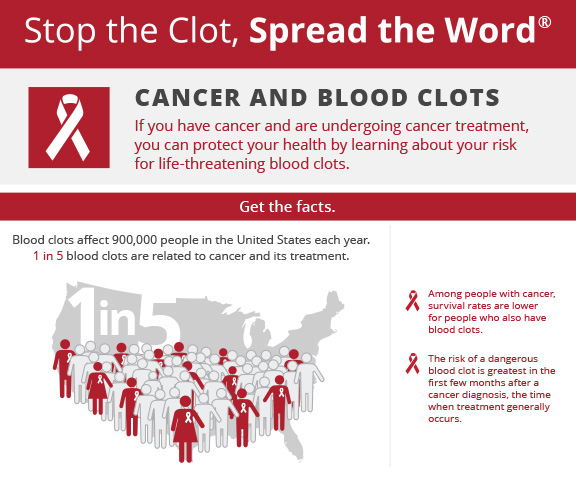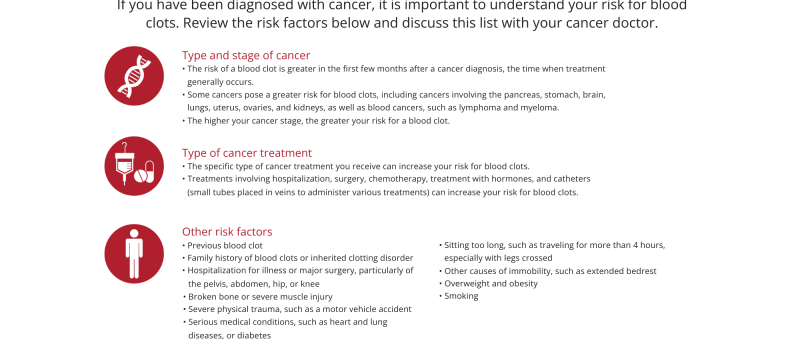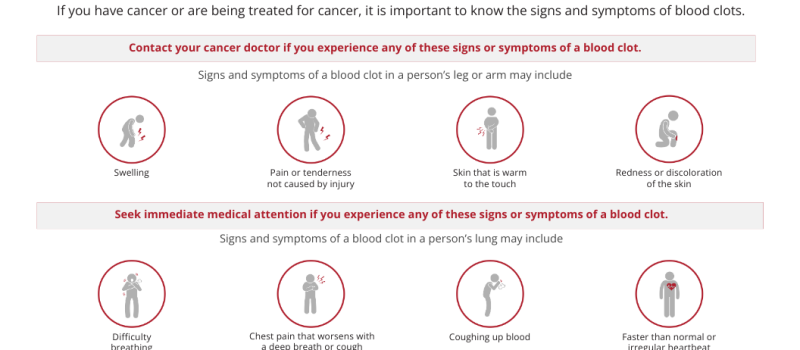Work with Your Healthcare Team to Understand Your Risk
and Recognize the Signs and Symptoms of Blood Clots
and Recognize the Signs and Symptoms of Blood Clots
Cancer can be a difficult diagnosis, with many new and overwhelming things to learn about and manage.
Your top priority is to get healthy.
One important step to take is to understand your risk for dangerous blood clots, because cancer and some of its treatments can increase your risk for blood clots. Talk with your healthcare team about your risk for blood clots. Make sure your cancer doctor and healthcare team know about your personal and family history of blood clots.
It is most important that you recognize the symptoms of blood clots and contact your cancer doctor if you experience any of them. Work with your healthcare team and make a blood clot prevention plan specific to your medical history and treatment.
A plan to prevent blood clots can help protect the most important thing – your health – during cancer treatment.
Get the Facts
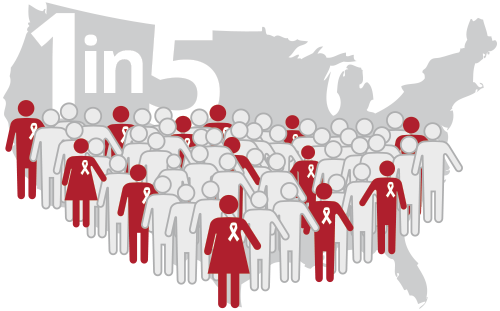
Blood clots affect 900,000 people in the United States every year,
and 1 in 5 blood clots are due to cancer and some of its treatments.
![]() Blood clots are a leading cause of death among people with cancer.
Blood clots are a leading cause of death among people with cancer.
![]() Blood clots are treatable. Early diagnosis and treatment can reduce complications of blood clots, including death.
Blood clots are treatable. Early diagnosis and treatment can reduce complications of blood clots, including death.
![]() The risk of a dangerous blood clot is greatest in the first few months after cancer is diagnosed.
The risk of a dangerous blood clot is greatest in the first few months after cancer is diagnosed.
![]() Among people with cancer, survival rates are lower for people who also have blood clots.
Among people with cancer, survival rates are lower for people who also have blood clots.
Understanding Blood Clots
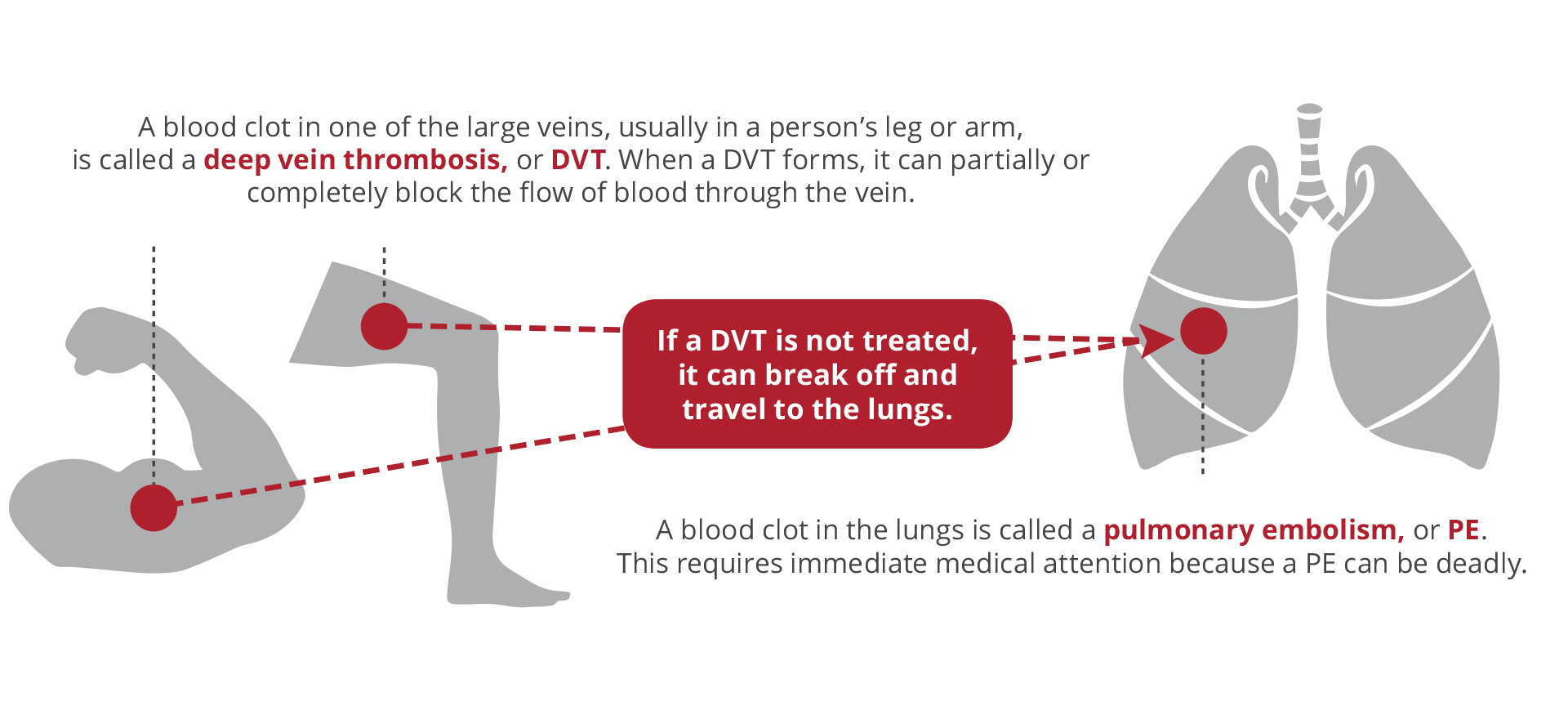
Recognize the Signs and Symptoms of Blood Clots
Contact your cancer doctor if you experience any of these signs or symptoms of a blood clot.
Signs and symptoms of a blood clot in a person’s leg or arm (also called a DVT) may include the following:
Swelling
Pain or tenderness not caused by injury
Skin that is warm to the touch
Redness or discoloration of the skin
Seek immediate medical attention if you experience any of these signs or symptoms of a blood clot.
Signs and symptoms of a blood clot in a person’s lung (also called a PE) may include the following:
Difficulty breathing
Chest pain that worsens with a deep breath or cough
Coughing up blood
Faster than normal or irregular heartbeat
Know the risk factors for blood clots.
If you have been diagnosed with cancer, it is important to understand your risk for blood clots.
Type and stage of cancer
- The risk of a blood clot is greatest in the first few months after cancer is diagnosed.
- Some cancers pose a greater risk for blood clots, including cancers involving the pancreas, stomach, brain, lung, uterus, ovaries and kidneys, as well as blood cancers such as lymphoma and myeloma.
- The higher your stage of cancer, the greater your risk for a blood clot.
Type of cancer treatment
- The type of cancer treatment you receive may increase your risk for blood clots.
- Treatments involving hospitalization, surgery, chemotherapy, treatment with hormones, and catheters (thin tubes placed in your veins for administering various treatments) can increase your risk for blood clots.
Risk factors
- Previous blood clot
- Family history of blood clots or inherited clotting disorder
- Hospitalization for illness or major surgery, particularly of the pelvis, abdomen, hip, or knee
- Broken bone or severe muscle injury
- Severe physical trauma, such as a motor vehicle accident
- Serious medical conditions, such as heart and lung diseases, or diabetes
- Sitting too long, such as traveling for more than 4 hours, especially with legs crossed
- Other causes of immobility, such as extended bedrest
- Overweight and obesity
- Smoking
Talk to your healthcare team and make a plan to prevent blood clots
Know the signs, symptoms, and risk factors for blood clots and discuss these risks with your cancer doctor.
When you are at home recovering from surgery, or if you are receiving treatment in an outpatient clinic, stay alert for any signs or symptoms of blood clots. Contact your cancer doctor right away if you experience any blood clot symptoms.
Work with your healthcare team to make a prevention plan.
Stop the Clot, Spread the Word®
The National Blood Clot Alliance and the Centers for Disease Control and Prevention are working on this important public health campaign to get the word out about blood clot risks and the signs and symptoms of blood clots.
You can be an important part of this education campaign by helping us
SPREAD THE WORD®
Please share this page
Other campaign items to share
For more information about blood clots, visit:
The information and materials on this site are provided for general information purposes only. You should not rely on the information provided as a substitute for actual professional medical advice, care, or treatment. This site is not designed to and does not provide medical advice, professional diagnosis, opinion, treatment, or services to you or any individual. If you believe you have a medical emergency, call 911 immediately.
Stop the Clot, Spread the Word® is a public education campaign made possible by funding provided to the National Blood Clot Alliance by the Centers for Disease Control and Prevention under Cooperative Agreement number 1U27DD001153-05.

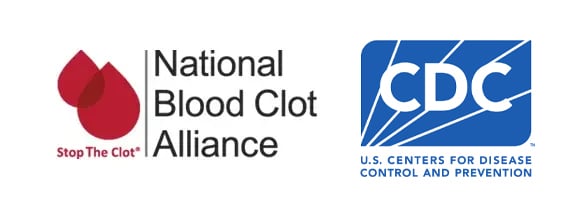
The mark ‘CDC’ is owned by the US Department of Health and Human Services and is used with permission. Use of this logo is not an endorsement by HHS or CDC of any particular product, service, or enterprise.

